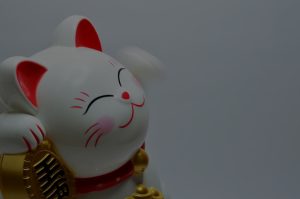**Title: Unlocking the Power of Feng Shui Symbols: Enhance Your Space and Well-Being**
**Abstract:** Discover the significance of feng shui symbols and how to effectively incorporate them into your living space to promote harmony, prosperity, and well-being.
Understanding the Essence of Feng Shui Symbols
Feng shui, an ancient Chinese practice, revolves around the idea that our environment profoundly affects our lives. At its core, feng shui symbols are visual representations of energy, or “chi,” that influence various aspects of our well-being. Understanding these symbols can empower you to create a balanced and harmonious living space. Each symbol carries its unique meaning, resonating with different energies that can attract prosperity, love, health, and protection into your life.
The Significance of Common Feng Shui Symbols
Feng shui symbols range from simple shapes to intricate designs, each representing specific energies. The **dragon**, for instance, embodies strength and good fortune, making it a popular choice for those seeking success. Similarly, the **phoenix** symbolizes rebirth and renewal, encouraging transformation and growth. Other symbols, like the **bagua mirror**, are used to deflect negative energy and protect your space. By understanding these symbols, you can strategically place them in your home to enhance their positive effects.
How to Use Feng Shui Symbols in Your Home
Incorporating feng shui symbols into your living space requires thoughtful placement and intention. Start by identifying the areas of your home that correspond to specific life aspects, such as wealth or relationships. For example, placing a **wealth vase** in the southeast corner of your home can attract financial abundance. Similarly, hanging a **crystal** in the relationship corner can enhance love and harmony. Remember, the key is to create a space that feels balanced and resonates with your personal energy.
The Role of Colors and Materials in Feng Shui
Colors and materials play a crucial role in feng shui symbols. Each color carries its vibrational frequency and can enhance the energy of the symbol it accompanies. For instance, **green** represents growth and vitality, making it ideal for symbols related to health and abundance. Meanwhile, **red** signifies protection and passion, suitable for symbols focused on love and relationships. Additionally, materials like **wood**, **metal**, and **water** can amplify the energy of symbols. For example, a wooden **bamboo plant** symbolizes resilience and prosperity, while a metal **wind chime** can attract positive energy and harmony.
Creating a Personalized Feng Shui Space
To truly harness the power of feng shui symbols, it’s essential to personalize your space. Consider your intentions and the energies you wish to invite into your life. Engage in activities that resonate with you, such as meditation or visualization, to strengthen your connection to the symbols. You might choose to create a dedicated **feng shui altar**, where you can display your favorite symbols, colors, and materials. This space will serve as a reminder of your intentions and a focal point for your energy.
Maintaining Balance and Harmony
Lastly, maintaining balance and harmony in your space is an ongoing practice. Regularly assess the energy flow and ensure that your feng shui symbols remain aligned with your intentions. As your life evolves, so should your feng shui. Be open to rearranging symbols or introducing new ones that resonate with your current goals. By doing so, you will create a dynamic environment that supports your growth and well-being.
In conclusion, understanding and utilizing feng shui symbols can significantly enhance your living space and overall quality of life. By thoughtfully integrating these symbols into your home, you can attract positive energy, prosperity, and harmony, creating a sanctuary that nurtures your spirit and supports your journey.










